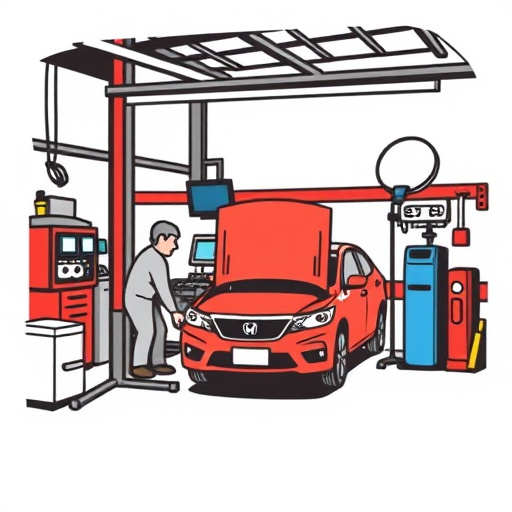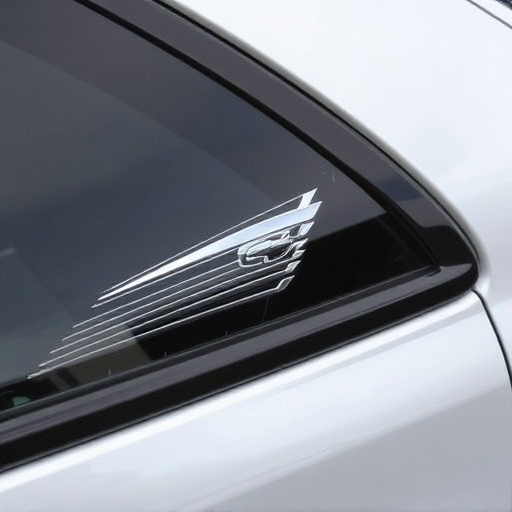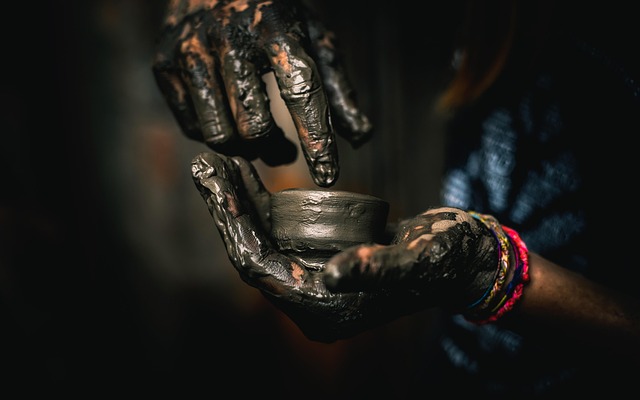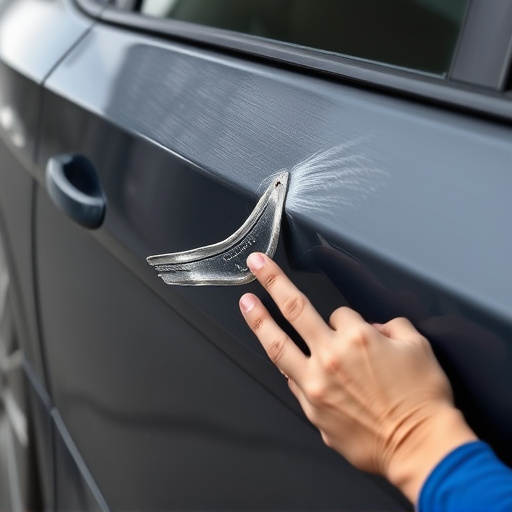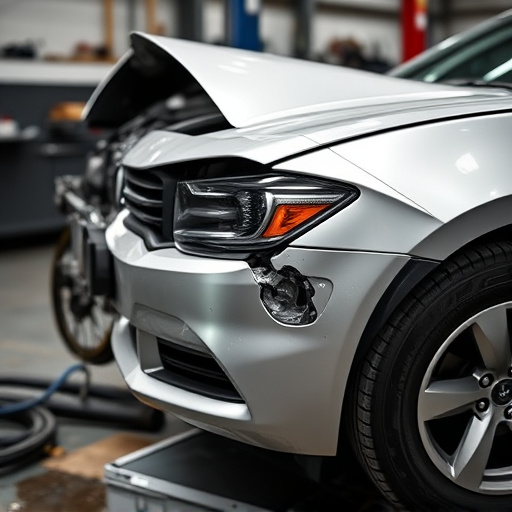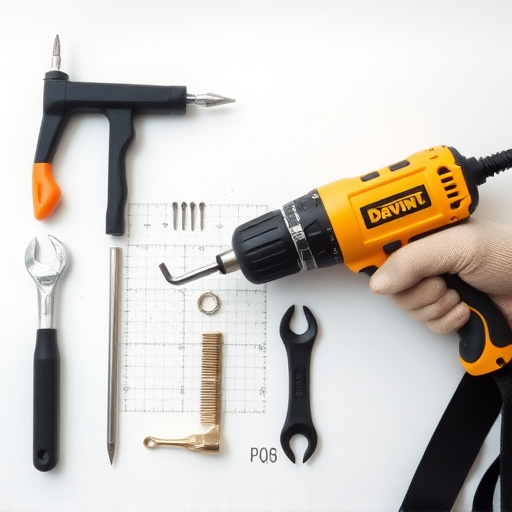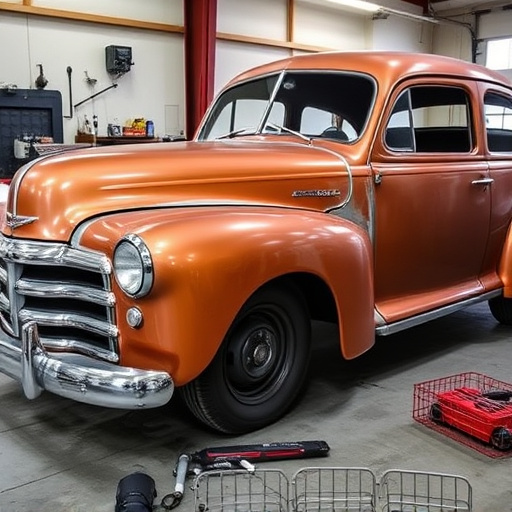Corrosion, caused by metal interaction with elements like moisture and oxygen, leads to structural damage if left unchecked. In automotive, prompt corrosion protection is vital; minor issues can escalate into severe damage. Effective strategies include proper painting, priming, sealing, and regular maintenance. Staff training involves understanding corrosion chemistry, application techniques for various surfaces, safety protocols, and specific vehicle risks. Meticulous techniques ensure complete coverage, using specialized tools to achieve seamless adherence. Proper training on product compatibility extends protective layer life, enhancing repair quality.
Training staff for effective corrosion protection application is essential for maintaining infrastructure integrity. This comprehensive guide delves into crucial aspects, starting with understanding corrosion: its causes, types, and impact on materials. Next, explore vital training essentials focused on staff safety, ensuring protocols are followed rigorously. Learn best practices for application techniques, including surface preparation, coating selection, and application methods to achieve optimal corrosion protection.
- Understanding Corrosion: Causes and Impact
- Training Essentials for Staff Safety
- Best Practices for Application Techniques
Understanding Corrosion: Causes and Impact

Corrosion is a natural process that occurs when certain metals interact with elements present in their environment, leading to degradation and eventual failure. Understanding this fundamental concept is crucial for implementing effective corrosion protection strategies. The primary causes of corrosion include moisture, oxygen, and various chemicals. Moisture, especially salt water, facilitates an electrochemical reaction on metal surfaces, resulting in the formation of rust—a common type of corrosion. Similarly, exposure to oxygen can lead to oxidation, causing metal to weaken over time.
In the automotive industry, for instance, bumper repair and scratch repair on Mercedes-Benz vehicles highlight the impact of corrosion. If left unattended, minor issues like dents or scratches can progress into severe corrosion, compromising structural integrity. Prompt corrosion protection measures, such as proper painting techniques and regular maintenance, are essential to prevent these cosmetic defects from turning into costly structural damage.
Training Essentials for Staff Safety

Training staff for effective corrosion protection application goes beyond simply teaching a process; it’s about equipping them with knowledge and skills to ensure their safety and that of the vehicles they work on. Essential training elements include understanding the chemistry behind corrosion, familiarizing with various corrosion protection methods like painting, priming, and sealing, as well as mastering application techniques specific to different vehicle surfaces, such as metal and plastic.
Safety protocols are paramount in any workshop environment, especially when dealing with hazardous chemicals used in corrosion protection. Staff should be trained on proper use of Personal Protective Equipment (PPE), safe handling and disposal procedures for chemicals, and emergency response measures in case of accidents or exposure. A detailed understanding of the specific risks associated with different vehicle components, like intricate dent repairs on a Mercedes-Benz, is crucial to prevent damage and ensure staff well-being.
Best Practices for Application Techniques

When it comes to effective corrosion protection application, the techniques employed are paramount. Best practices involve ensuring thorough coverage, as even the smallest gaps can lead to metal deterioration over time. This meticulousness is especially crucial in areas prone to moisture and environmental pollutants, such as a vehicle’s undercarriage. Proper application requires using specialized tools and equipment designed for accurate spraying or brushing, ensuring the corrosion protection coating adheres seamlessly to all surfaces.
Additionally, proper training on product compatibility and drying times is essential. Staff should be adept at selecting the suitable corrosion protection products for different vehicle types and conditions, whether it’s for regular auto maintenance or more complex repairs like a fender bender. Understanding the unique properties of each product ensures optimal performance, extending the life of the protective layer and, by extension, the vehicle itself, thus enhancing the quality of vehicle repair services provided.
Training staff in effective corrosion protection application is a multifaceted process that involves understanding corrosion, prioritizing safety, and mastering application techniques. By equipping employees with the knowledge to identify corrosion causes, select appropriate protective materials, and apply them safely and effectively, organizations can significantly extend equipment lifespans and reduce maintenance costs. Adhering to best practices ensures not just robust corrosion protection but also a safer working environment for all involved. Implementing these strategies is a key step towards safeguarding assets and preserving operational efficiency in industries where corrosion protection is paramount.
